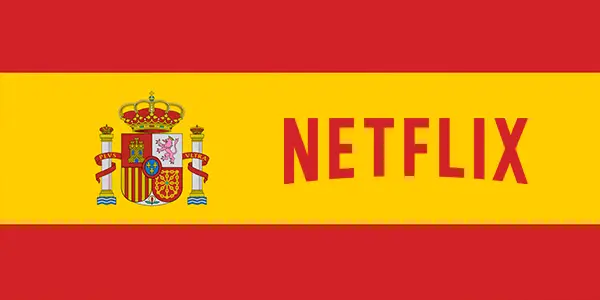In 2007, the same year that Netflix launched its now wildly successful streaming services, CEO Reed Hastings said, “The [streaming] market is microscopic. DVD is going to be a very big market for a very long time.”
Flash forward less than a decade later. Movie rental shops seem as far a thing of the past as telephone booths, some quaint trend we forget we used to have a need for. DVD’s now collect dust on Goodwill shelves, lay forgotten under couches or are etched with tiny scratches as they serve as DIY coasters.
During peak hours, Netflix.com accounts for more than a third of North American internet traffic. More than 65 million members around the globe now lay awake, streaming hundreds of millions of combined hours of content daily onto their various screens, from “Grey’s Anatomy” to “Gilmore Girls” to “Gossip Girl” (and those are just the G’s).
The familiar guilt of staying up too late on a work/school night washes over us, but we’re comforted by the fact that we never actually pressed ‘Next Episode’ and now the theme song has started and it’s out of our hands. We say a silent prayer of thanks to the automatic play feature for relieving us of any real sense of responsibility.
And now that “Netflix and Chill” and its wink wink nudge nudge connotations have made their way into our vernacular, we no longer need to feel like lonely lepers for spending hours shut inside, staring at our computer screens— even if our only actual company is a family-sized jar of Nutella and a plastic spoon. Netflix is the loyal, non-judgy best friend who tells us, “Sit down, put your feet up.”
“But-” you try to interject, “I have so much to-”
“Shhh,” Netflix puts a finger to your mouth. “You deserve a break.”
So when I decided to study abroad in Spain, in the weeks leading up to my departure I frequently experienced sweaty palms and night sweats. Possibly these symptoms were partially due to the whole ‘leaving all friends and family for a foreign country’ thing, but I know the main cause was my anxiety over Spain’s lack of Netflix. “How would I irreversibly damage my retinas and binge-watch mindless television?” I asked myself.
Thankfully, my friend the Internet told me about Hola Unblocker, a VPN that allows you to trick your browser into thinking you’re in a different country. I eagerly downloaded it and set the default country to the United States, the land of the free, to watch Netflix (because God forbid I live without Netflix during my nine months of cultural enrichment).
However two short months into my overseas interlude, the amazing happened: Netflix became available Spain. On Tuesday, Oct. 20, 2015, it landed in Spain with a bang; Netflix CEO Reed Hastings and a sprinkling of stars from several Netflix original series celebrated at a launch party. At midnight that day Spain began to bask in the same computer screen glow as the rest of us, and the country was never the same.
Or was it? In reality, I feel like Netflix’s Spanish launch hit me and other study abroad students the hardest. That day at classes there were a lot of conversations that began wide-eyed with “Did you hear??” as if some world war had ended.
But when I’ve asked my Spanish friends about whether they’ve jumped on the Netflix bandwagon, they’ve all responded negatively (despite a month-long free trial period, or six free months for Vodafone users) and seem at best vaguely interested in (or maybe amused by) the streaming service’s incredible success in the States.
Hastings reportedly expects one third of Spanish households to be hooked on Netflix within seven years, but here’s the thing: I don’t think Spanish culture supports that aspiration.
Unlike many Americans for whom the sidewalks and streets are just a means of transport, Spanish life is in the streets. Vida in Spain is sitting at an outdoor bistro table sipping milky coffee, not-so-legally drinking Cruzcampo beers in a plaza, and displaying a little too much affection a little too publicly in the park— or in the metro, the middle of the street or literally anywhere else.
Dinner takes place around nine or ten p.m., or later still, so the hours after dinner of lounging around aren’t as plentiful as in the U.S. And considering the majority of Spaniards live with their families well into adulthood, the Netflix and Chill culture isn’t exactly rampant. Young Spaniards instead go to bars and discotecas to mix n’ mingle.
That’s why I was surprised to find that when I open a Spanish Netflix tab and an American Netflix tab side by side, I can’t even tell the difference between the two. When Netflix first came to Spain, it was populated mainly by Netflix original series along with a smattering of old chick flicks and niche documentaries. Now it has so much content that I’ve all but stopped using the American version (although disturbingly the Spanish Netflix does not offer “Friends”).
 The “popular” and “trending” sections are almost identical, and besides the few exceptions such as “Witty TV Comedies” (congrats to “Master of None” and “Arrested Development” for making the cut), the rest of the categories are strikingly similar also.
The “popular” and “trending” sections are almost identical, and besides the few exceptions such as “Witty TV Comedies” (congrats to “Master of None” and “Arrested Development” for making the cut), the rest of the categories are strikingly similar also.
Of course Hollywood is one of the world’s largest film industries, so it makes sense that American movies are watched all over the world. Spanish Netflix does have a category called “Spanish movies,” but the selection pales in comparison to the options produced by English speakers (with subtitles offered only in Spanish).
The main reason for the lack of Spanish options is the same reason I can walk down a Madrid street and encounter Starbucks, Subway and McDonalds: Globalization has made the osmosis of one culture into another a fairly fluid process. And it goes both ways. When I Skyped with my parents they said that the last two series they binge-watched were Spanish— made in Spain, watched in Boston.
Like a real life Big Brother, Netflix is always watching. They knew that people who liked Kevin Spacey also liked British imports, and thus “House of Cards” was begotten. They also personalize recommendations based on a web of complex analytics (as it’s been explained to me by people who are much more technology-wise than myself), so that not only the movie you settle on watching, but your click-stream of consciousness on the way there, as well as the views of members with similar preference profiles to yours all come together to bring you the home screen of possibilities.
As I sit at my computer simultaneously in two different Netflix-verses thanks to the power of the VPN, the content offered, recommended and popularly watched on both home screens is largely the same.
So the conclusion is either that globalization has made it profitable to show the same shows to two completely different audiences, or that globalization has made it so even on different continents we’re not so different after all. Or perhaps thirdly, we were never very different (aww), but like most things I needed to hear it from Netflix to believe it.
I don’t think Netflix will be the five-star hit it’s been in the U.S., but maybe I’m wrong. Even as I curl up in bed and let Netflix turn my brain to mush, I’m sure Hastings and his team of masterminds are cooking up an irresistible concoction of Spanish interests and infusing them into a series sure to capture the heart of Spaniards nationwide.
It will be a drama, obviously, and will most likely star Antonio Banderas as a character based on Rafael Nadal. But I’m just spitballing here.

















